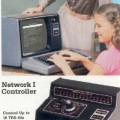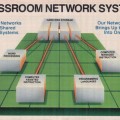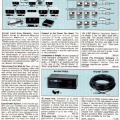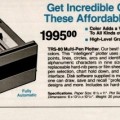The Network 3 Controller
The Radio Shack Network 3 Controller (catalog number 26-1212) was a networking system designed for use in classrooms. First appearing in the 1983 catalog, the Network 3 Controller cost $599.00. Unlike the earlier Network I and Network 2 Controllers, which worked with more than one type of TRS-80 computer, the Network 3 Controller only supported the Model III or Model 4 in Model III mode.
From the description in a 1983 Radio Shack catalog:
The Network 3 Controller enables up to 16 Model III student stations to choose from lessons stored on a teacher’s “host” system. This frees the instructor from repeatedly loading programs into individual stations. And scores are automatically stored on the host disk for later review as lessons that generate student record keeping are completed. The Network 3 also allows computer science students to learn Disk BASIC on a non-disk Model III. That means you get the features of a disk-equipped computer, but at about half the price!
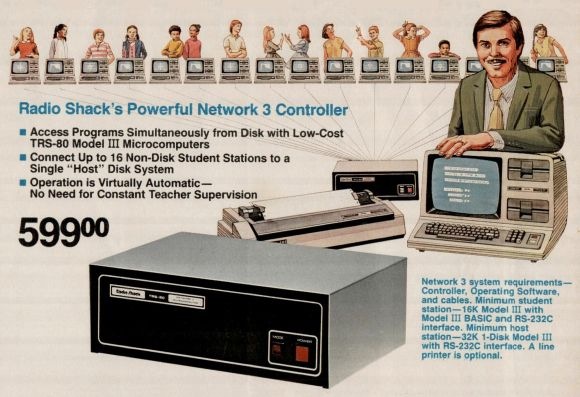
From a 1983 Radio Shack catalog
Instead of the cassette port connections used by the earlier Network I and Network 2 Controllers, the Network 3 Controller used RS-232 cables. This was both faster and more flexible than cassette port communications but did require that all the computers have an RS-232 interface installed. For schools without compatible student computers, Radio Shack sold the $1249.00 (later $899.00) Network 3-Compatible TRS-80 Model 4 Student Station (catalog number 26-1059) which came “complete and ready to use.”
The Network 3 Operating System (catalog number 26-2775), which cost $149.00, wasn’t included with the Network 3 Controller but was required to use it. Written by Micro-Systems Software, the authors of DOSPLUS, the Network 3 Operating System allowed sharing files and a printer between student and teacher computers. According to the Radio Shack catalog, the Network 3 Operating System:
Permits student stations to SAVE and LOAD programs directly to and from the host disk and LLIST and LPRINT to the host printer. Printer access requests are “spooled” at the host until the printer is free, so pupils can move on to the next project without delay.
In 1985, Radio Shack introduced the the Network 3 Hard Disk Operating Software (catalog number 26-2778) which also cost $149.00. It performed the same functions as the earlier Network 3 Operating System, but it was intended for Radio Shack’s 5 megabyte (catalog number 26-1130) and 15 megabyte (catalog number 26-4155) hard drives.
Radio Shack sold a wide selection of educational software designed for the Network 3, including:
- K-8 Math Program Volume I (catalog number 26-1175)
- Euclid Geometry Tutor (catalog number 26-1724)
- Quadratic Equations (catalog number 26-2623)
- TRS-80 Chemistry Lab (catalog number 26-2609)
- Introduction to the Alphabet (catalog number 26-1718)
Prices for these packages ranged from $40 to $200, depending on their complexity. Radio Shack also sold additional tools, such as the TRS-80 Network 3 Lesson Presentation Package (catalog number 26-2713) a $239.00 utility that “allows you to use our Network 3 Controller to present lessons created with TRS-80 AUTHOR I.” Some third-party software, such as New Classics Software’s Pascal 80, had special versions that supported the Network 3. Radio Shack sold the Network 3 version on Pascal-80 as Network Pascal (catalog number 26-2739) for $799.00.
Despite the name, the Network 3 Controller didn’t replace the earlier Network 2 Controller. They appeared together (along with the later Network 4) in Radio Shack catalogs until 1987.
